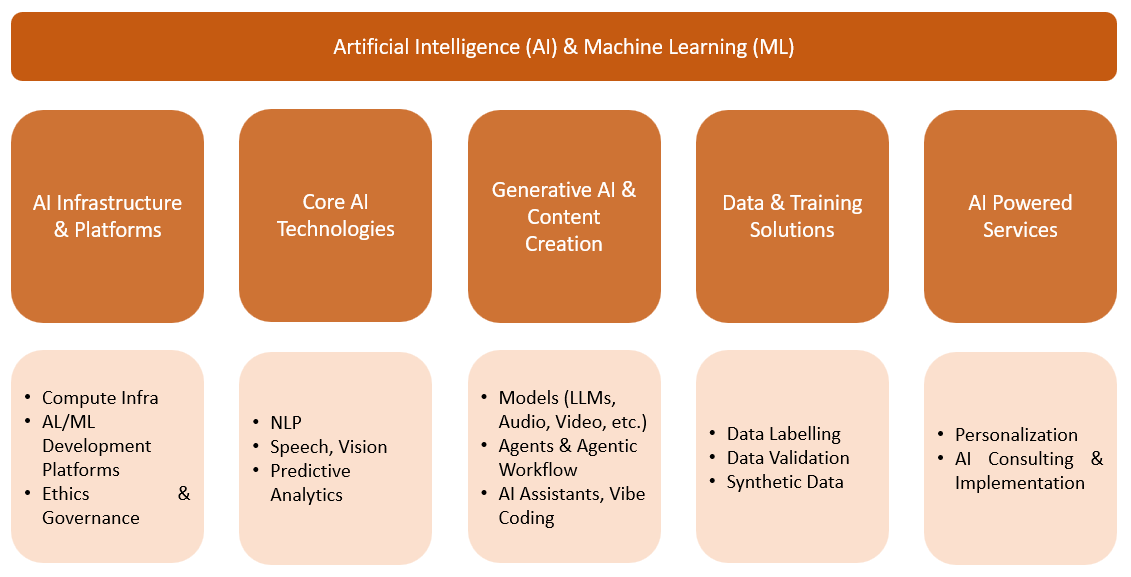Combine & Conquer In The Agentic AI Space - Part I

The race for Agentic AI dominance heats up as AI giants just moved up the stack
Things are moving fast in the agentic AI space. Last week we had the OpenAI DevDay and the launch of Gemini Enterprise.
OpenAI unveiled Apps in ChatGPT and AgentKit. Apps in ChatGPT lets you launch & use third party apps within your chat workflow. ChatGPT is now evolving from being another AI app that you use for tasks such as research, coding, etc. into becoming a real AI copilot. This might be an eventual play for a quasi-OS role or even hardware. AgentKit is a complete toolkit for building AI agents from prototype to production. It is aimed at developers and workers who want to build automation workflows, customer support bots, or coding assistants within the ease of the OpenAI ecoystem.
And right after, Google launched Gemini Enterprise which comes with its own pre-built agents for software development, data analysis, content creation, customer engagement, etc. and some third-party agents (Workday, etc.) all built to work with their Gemini models. It is a competitor to Apps in ChatGPT and AgentKit.
You can read more at these links -
https://openai.com/devday/
https://cloud.google.com/gemini-enterprise
First the foundations, then the wrappers
The direction that OpenAI and Google are taking is clear - first they built the foundations i.e. their proprietary LLMs, then opened those to use via chat, allowed for multi modal outputs, added web search and deep research functionality. This led to a mushrooming of "wrapper" apps that were built on top of these models. Next came MCP and the agentic wrapper apps - AI apps meant for specific tasks - write reports, summarize emails, run marketing outreach, build rich profiles by pulling in data from multiple sources, detect financial fraud and so on. And capitalizing on that came the agentic workflows i.e. multi step workflows with AI agents within these workflows, controlling, monitoring, summarizing, deciding and essentially becoming an upgrade over traditional automation workflows which had little ability to deal with ambiguous inputs or situations. Now, with OpenAI and Google getting into AI agents and agentic workflows, they are clearly playing to win in this space. And they will leverage their distribution muscle, underlying platforms, AI app stores and integrations to help them out.
When the incumbents disrupt the disruptors
Independent AI agent and agentic workflow startups now have serious competition. Sure these companies have their strengths, such as -
--no vendor/model/infra lockins aka we are not OpenAI/Anthropic/Gemini, etc.
--the ability to choose & switch models and frameworks - Claude for coding, Gemini for long context tasks, GPTs for orchestration, and Qwen, Mistral, Kimi @ Ollama for when you want to finally use those GPUs that you bought
--specialized or finetuned offerings for enterprise users
But, none of these are actually going to stop OpenAI or Gemini from trying to win big in the agentic space. Enterprises might value flexibility and transparency and of course, vendors' expertise. But getting things to work right out of the box, having one vendor responsible for the full AI experience as opposed to multiple vendors and with promises of regular updates, data security, etc. are just as strong draws for enterprises. Google's Workspace, AWS or even Windows OS+Office Suite did come to dominate their businesses and continue to do so. Smaller independent players struggle against behemoths - they either survive in niches or just wither away. This is why, very vertical focused agentic AI companies may still be fine, but others just got their TAM sizes clipped.
In times like these, the smaller less specialized agentic AI startups need to acknowledge the threat they face and rethink their pitch to enterprise clients.
Let's end Part I of this Combine & Conquer series, on this note. And here below is the structure of the AI & ML industry in India - do note the categories that make up this industry. We will pick up Part II from here -

Related Reading
For more insights into the AI and ML landscape in India, check out our previous blog post:
All That Is Happening in AI & ML in India →